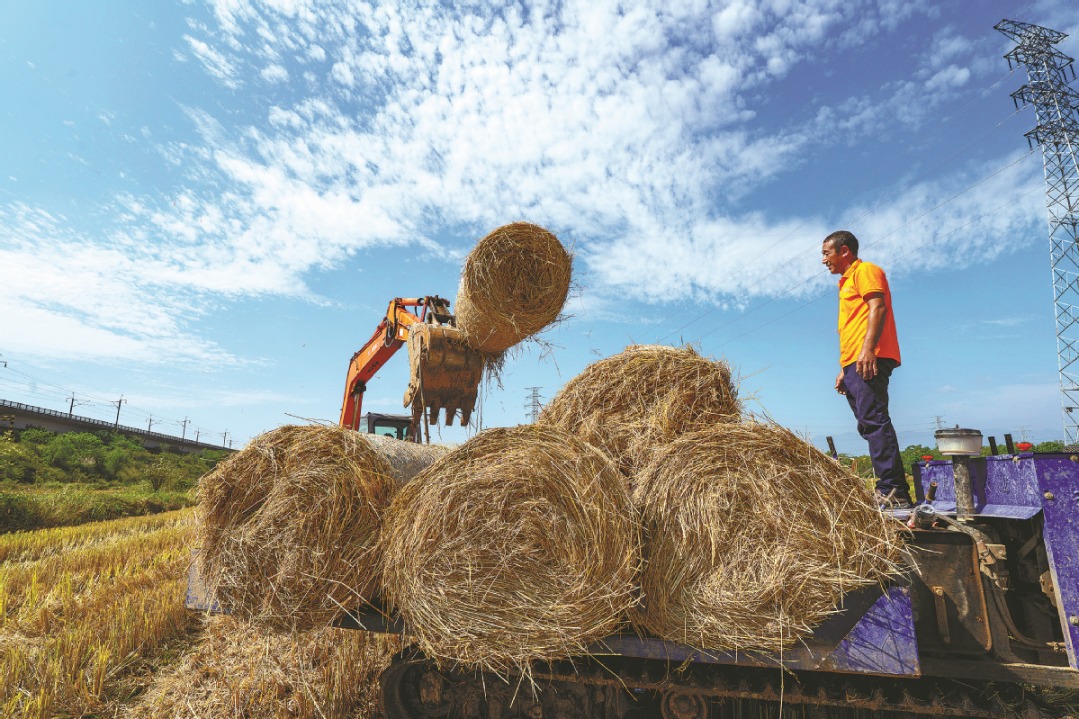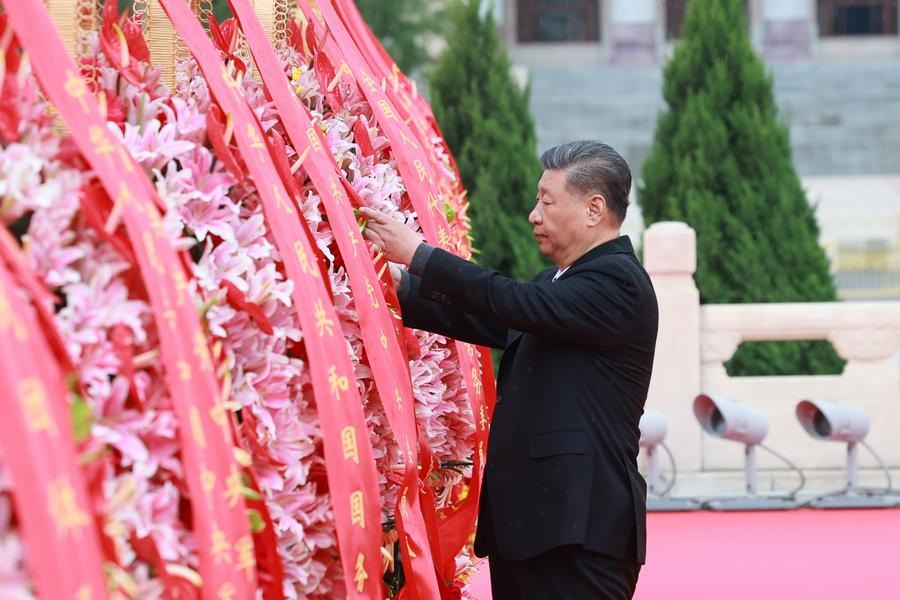Farm waste turned into biofuel produces healthy profit
Transformation of recycled straw contributes to green transition in grain-growing provinces





Editor's note: China Daily is publishing a series illustrating the country's efforts to achieve its carbon peak and carbon neutrality goals.

Several major grain-producing regions have been proactively leveraging their abundant agricultural and forestry residues to aid the low-carbon transition, converting waste into renewable energy and organic fertilizers.
As the country's largest grain-producing region, Heilongjiang province in Northeast China is developing its bioeconomy, with a focus on producing biogas, according to the Heilongjiang Development and Reform Commission.
In response to inquiries from China Daily, the commission highlighted the significant potential of Heilongjiang in developing biomass energy by utilizing its abundant resources of straw, forestry waste, livestock and poultry manure.
According to the commission, the province produces around 90 million metric tons of straw annually, with a potential collection rate of nearly 86 percent. The province's 20 million hectares of forests are estimated to create 9.6 million tons of waste each year. The province's substantial livestock and poultry industry also serves as a reliable, consistent source for biomass energy production, generating 90 million tons of manure annually, it added.
Recognizing the ample available resources, Heilongjiang has identified biogas as a key emerging sector in the development of renewable energy, and has rolled out a slate of measures to maximize its potential.
In 2022, the province unveiled an action plan, pledging to transform the region into a model demonstration base for large-scale biogas development in China's cold north.
According to the plan, Heilongjiang aims to gradually develop mature biogas production technologies suited to the climate characteristics of northern regions by the end of this year, with a series of large-scale biogas demonstration projects completed and put into operation.



















